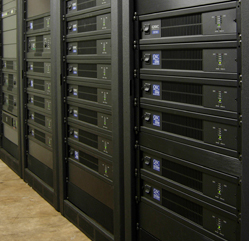
LISTENER DISTANCE FROM SOURCE
This is the distance from the loudspeaker to the farthest listener. If you are using several loudspeakers that extend into the audience, this distance is from the nearest loudspeaker.
For example, if the audience is 100 feet deep, and you have loudspeakers at 0 feet and 50 feet, the listener distance is 50 feet.
If you don’t know this distance, you can make a rough estimate from the typical values below. Be sure to enter the distance in meters (m).
Coffee house: 16 to 32 feet (4.8 to 9.8 m)
Small club or auditorium: 32 feet (9.8 m)
Medium club, auditorium or house of worship: 45 feet (13.7 m)
2,000-seat concert hall: 110 feet (33.5 m)
Small outdoor festival: 50 feet (15.2 m)
Stadium or arena: 100 to 300 feet (30.5 to 91.4 m)
Desired SPL
Listed below are typical sound pressure levels (SPLs) for various types of music. The SPL meter was set to C-weighting, slow response.
You might want your system to be at least 10 dB above the background noise level to achieve a good signal-to-noise ratio.
New age: 60-70 dB
Folk: 75-90 dB
Jazz: 80-95 dB
Classical: 100 dB
Pop: 90-95 dB
Rock: 95-110 dB
Heavy metal: 110 dB
OTHER CONSIDERATIONS
The calculations discussed here apply to anechoic or outdoor conditions. If the sound system is inside a venue, the room reverberation will increase the SPL typically by 6 dB. You can use this room gain as extra headroom.
Suppose you need to supply 1,000 watts for peaks, and your loudspeaker’s continuous power handling is 250 watts.
A loudspeaker’s peak power handling is typically 4 times its continuous power handling. So the loudspeaker can probably handle 1,000 watts peak. That means you can use a 1,000-watt amplifier to drive that loudspeaker – as long as you use that power for peaks, and do not drive the loudspeaker continuously with 1,000 watts. In other words, don’t turn up the amp so high that it clips.
What if your sound system uses an active crossover and a separate power amp channel for each driver? Apply the calculator to each driver type.
Say you have a 3-way system. Determine the power separately for the subs, mid-range drivers and high-frequency drivers. All three types of driver should produce the same SPL at the same distance.
Note that horn-loaded drivers tend to have much higher sensitivity than subwoofers, so the horns need less power to produce the same SPL as the subs.
Suppose your sound system has multiple loudspeakers that extend into the audience area. For example: an outdoor festival with loudspeaker clusters on delays every 100 feet, or a set of ceiling-mounted loudspeakers. Apply the calculator to each nearby loudspeaker cluster or loudspeaker.
Once you know how much power you need, you can select an amplifier from manufacturers’ websites or datasheets. Look for the per-channel power specs, at the appropriate load impedance, and dual or bridge-mono mode.
You might want to choose an amplifier that has more power than you need in case you expand your applications. Also, it’s wise to specify a little more power than you need. You can always turn down a power amp if the system is too loud, but you can’t turn up a power amp past maximum if the system is too quiet!
AES and SynAudCon member Bruce Bartlett is an audio engineer and audio journalist. He is the author of Practical Recording Techniques 5th Ed. and Recording Music On Location.
